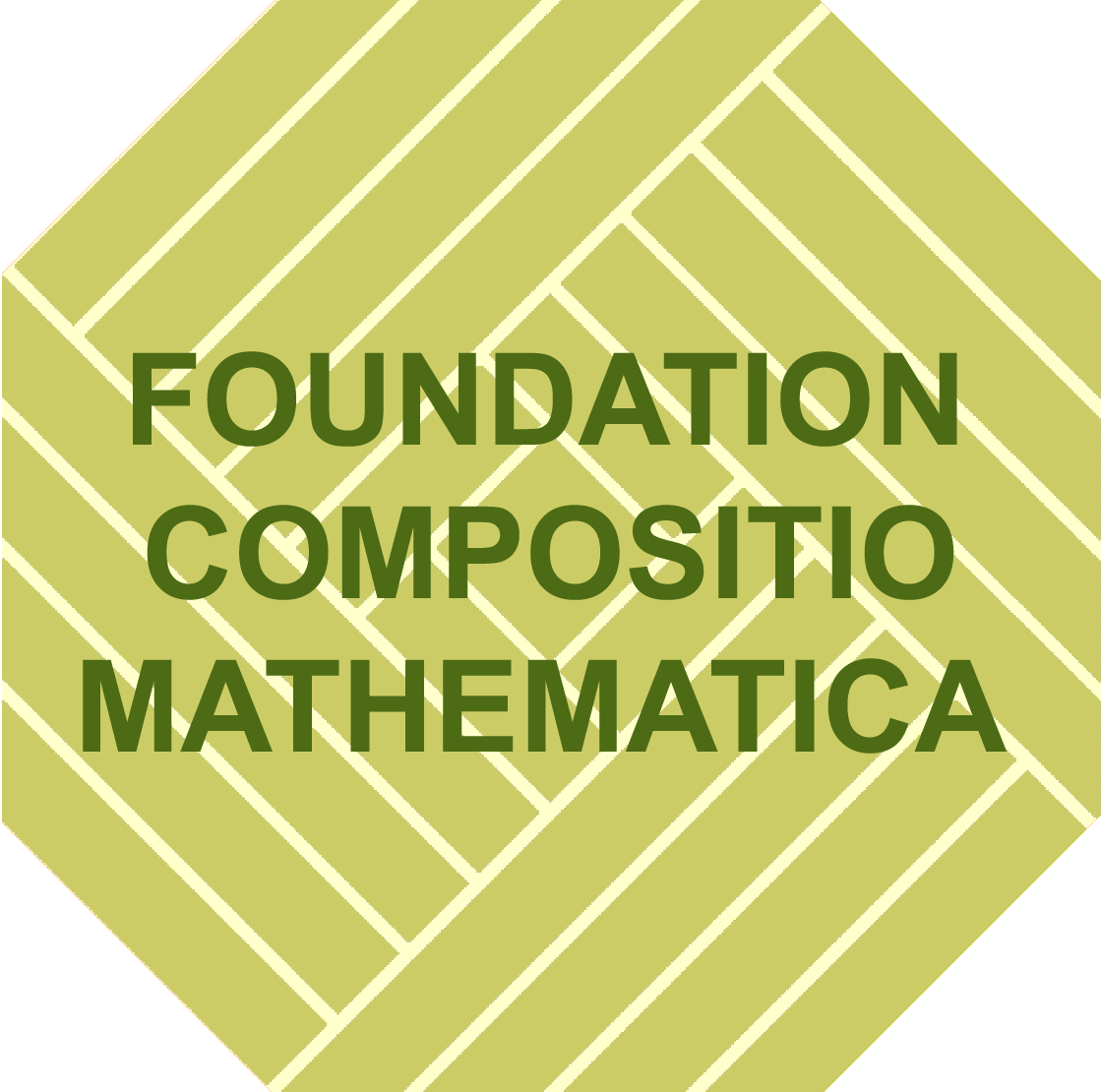Young Perspectives in Algebraic Geometry II
The second edition of "Young Perspectives in Algebraic Geometry" (YPAG2) is an international conference which will take place from 3-5 April 2019 at the Mathematisches Institute, Universität Bayreuth.
The main purpose of YPAG is to gather people from Germany and across Europe to present and discuss the research that young algebraic geometers are currently undertaking.
Here is the webpage of the first edition of YPAG.
Confirmed speakers:
Tom Ducat (Bristol University)
Andrea Fanelli (Laboratoire de Mathématiques de Versailles)
Filippo Favale (Università degli Studi di Milano-Bicocca)
Sara Angela Filippini (Imperial College London)
Frank Gounelas (TU Munich)
Kyoung-Seog Lee (IBS-CGP)
Alvaro Nolla de Celis (Universidad Autónoma de Madrid)
Marco Ramponi (Universität Augsburg)
Juliana Restrepo Velásquez (Aix-Marseille Université)
Sara Torelli (Università degli Studi di Pavia)
The social dinner will take place on Thursday 4 April at 19:00 at Restaurant Eule (Google Maps).
For organisational reasons, all participants should register by sending an email to ypagmath@gmail.com, specifying name, affiliation and if they intend to participate at the social dinner on Thursday evening.
Participation of PhD students and young post-doc researchers is especially welcome.
There are limited funds to cover some expenses of young participants.
Let us know if you need funding by sending an email to ypagmath@gmail.com with the following information:
- name and affiliation;
- a short resume explaining your research interests, current status and reason for funding request;
- an outline of your budget and an indication of the amount requested.
The deadline for funding request is: 15 February 2019.
The deadline for registration is: 22 March 2019.
Organizers: Stephen Coughlan (Bayreuth), Davide Frapporti (Bayreuth).
ABSTRACTS
Tom Ducat Cluster algebras and 3-fold flips
Abstract: Mori introduced a continued division algorithm which can be used to generate regular functions on a 3-fold flipping neighbourhood of type k2A. This gives enough information to describe the flip. Later Brown and Reid introduced ''diptych varieties'', which go beyond Mori's algorithm by producing a full presentation of the graded ring associated to the flip, using a technique called unprojection. I will explain how Mori's algorithm is a type of cluster algebra mutation, the relationship with diptych varieties and how the cluster algebra can be used to describe the full structure of the graded ring defining the flip.
Andrea Fanelli Fano varieties, fibrations and pathologies in positive characteristic
Abstract: In this talk, starting from the perspective of characteristic zero, I will discuss some pathologies for Fano varieties in characteristic p>0. I will focus on two aspects:
- smoothness for the generic fibre of del Pezzo fibrations in dimension 3;
- exotic torsion for the Néron-Severi group of Fano 3-folds.
This is a joint project with Stefan Schröer.
Filippo Favale Fibrations in planar curves and Xiao's conjecture
Abstract: The relative irregularity of a fibration is defined to be the difference between and . What we call nowadays Xiao's Conjecture (a slight modification of the original conjecture of Xiao) predicts that, for non trivial fibrations the relation should hold where is the generic fiber of . The conjecture is known to be true in some cases but it is safe to say that is widely open. I will talk about some recent ideas in order to approach the conjecture in the cases where the genus of the general fiber is small. In particular, I will talk about a work in collaboration with J.C. Naranjo and G.P. Pirola in which we proved the conjecture for one of the open cases: fibrations whose general fiber is a plane quintic curve.
Sara Angela Filippini Orbital degeneracy loci and applications
Abstract: We consider a generalization of degeneracy loci of morphisms between vector bundles modelled on orbit closures of algebraic groups in their linear representations. In a preferred class of examples we gain some control over their canonical sheaf. We show how these techniques can be applied to construct Calabi-Yau and Fano varieties of dimension three and four. This is joint work with Vladimiro Benedetti, Laurent Manivel and Fabio Tanturri.
Frank Gounelas Title: Regenerating curves on K3 surfaces
Abstract: I will discuss the problem of whether a K3 surface contains infinitely many rational curves and introduce a new technique for proving such a result (building on previous work of Bogomolov-Hassett-Tschinkel and Li-Liedtke). This is joint work with Xi Chen and Christian Liedtke.
Kyoung-Seog Lee Ulrich bundles on some Fano manifolds
Abstract: Ulrich bundles are special vector bundles on algebraic varieties which draw lots of attention in these days. In the first part of this talk, I will review basic results and recent developments about Ulrich bundles. Then I will discuss the existence and moduli problem of Ulrich bundles on some Fano manifolds using derived categories of coherent sheaves. This talk is based on joint works with Yonghwa Cho, Yeongrak Kim and Kyeong-Dong Park.
Alvaro Nolla de Celis Group actions on dimer models
Abstract: Abstract: A dimer model is a bicolored graph on a 2-torus T with certain conditions. Although they were originally introduced as statistical mechanical models, there has been discovered recently many relations of these models with other branches of mathematics, in particular with several topics in Algebraic Geometry. In this talk I will consider the notion of a symmetric dimer models by the action of a finite group, and show that they give examples of (non-commutative) crepant resolutions of non-toric non-quotient Gorenstein singularities in dimension 3. This is a joint work with Akira Ishii and Kazushi Ueda.
Marco Ramponi On Nikulin K3 surfaces and their moduli
Abstract: We study some natural projective models of Nikulin surfaces and determine the Brill-Noether theory of their hyperplane sections. As an application, we compute the class of some natural effective divisors on the moduli space of Nikulin surfaces (of any genus/degree), this way producing a number of relations in its tautological ring.
Juliana Restrepo Velásquez On the Geometry of Quotients of Products of Curves
Abstract: In this talk, we are interested in the geometry of algebraic varieties that appear as minimal resolutions of quotients of the product of curves by the action of a finite group. We then study the positivity of their cotangent bundle, due to its many geometric implications and the valuable and useful information that can be obtained in order to approach some difficult problems such as the famous conjectures of Lang, Lang-Vojta and Green-Griffiths-Lang ; these conjectures give, in particular, strong constraints on the distribution of the rational curves in varieties of general type. In the case of dimension two, we give a criterion for the positivity of the cotangent bundle and we study the algebraic hyperbolicity of product-quotient surfaces. These results apply to the case of product-quotient surfaces of general type with geometric genus, irregularity and second Segre number all equal to zero, in which we prove effective versions of the previous conjectures. More generally in higher dimension, we obtain a criterion for the positivity of the cotangent bundle in the case of smooth quotients and we study in detail the case of the symmetric products of curves.
Sara Torelli On the kernel bundle of the Higgs field of families of curves and the Jacobian locus
Abstract: We consider two vector subbundles of the Hodge bundle naturally associated to any weight- polarized variation of Hodge structures: the flat bundle with the Gauss-Manin connection and the kernel bundle of the associated Higgs-field (fibrewise describing its infinitesimal variation). By definition they always fit into an inclusion , so one can ask in which cases this must be strict and why. In the seminar we answer the question for variations coming from families of curves. More precisely, for any smooth projective curve of genus and for any , we construct a family of deformations of parametrized by a quasi-projective smooth curve such that the rank of is , the rank of is less or equal than and the monodromy of is finite. As an application we use the modular interpretation of such families to study their properties in the Jacobian locus, following some recent improvements in collaboration with Alessandro Ghigi and Gian Pietro Pirola. The result is a joint work with Víctor González-Alonso.
List of Participants
- Ingrid Bauer (Universität Bayreuth)
- Jacob Bennett-Woolf, (University College Cork)
- Nicola Cancian (Università degli studi di Trento)
- Fabrizio Catanese (Universität Bayreuth)
- Alberto Cattaneo (Max-Planck-Institut für Mathematik, Bonn)
- Luca Cesarano (Universität Bayreuth)
- Stephen Coughlan (Universität Bayreuth)
- Eduardo Dias (CMUP - Centro de Matemática da Universidade do Porto)
- Tom Ducat (Bristol University)
- Andrea Fanelli (Laboratoire de Mathématiques de Versailles)
- Filippo Favale (Università degli Studi di Milano-Bicocca)
- Sara Angela Filippini (Imperial College London)
- Davide Frapporti (Universität Bayreuth)
- Özhan Genç (Politecnico di Torino)
- Frank Gounelas(TU Munich)
- Kacper Grzelakowski (University of Łódź)
- Kyoung-Seog Lee (IBS-CGP)
- Philipp Naumann(Universität Bayreuth)
- Alvaro Nolla de Celis (Universidad Autónoma de Madrid)
- Jake Patel (University of Warwick)
- Mihai Paun (Universität Bayreuth)
- Marco Ramponi (Universität Augsburg)
- Juliana Restrepo Velásquez (Aix-Marseille Université)
- Karin Schaller (Freie Universit\"at Berlin)
- Sara Torelli (Università degli Studi di Pavia)
- Martin Ulirsch (University of Frankfurt)
- Daniele Zuddas (Universität Bayreuth)

Funded by:

